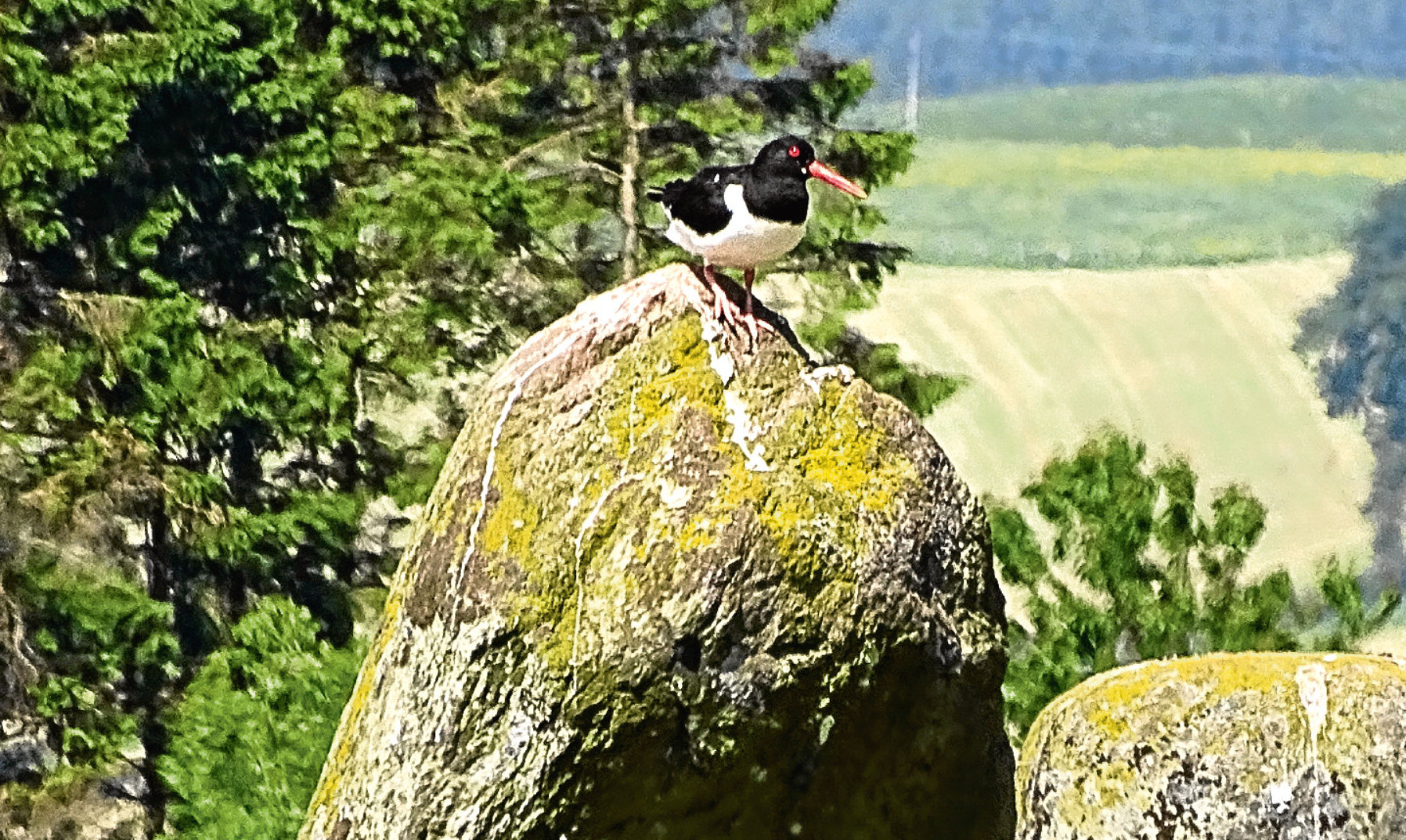The oystercatchers are back.
This may not be heart-stopping news if you live on the Fife coast or around the Tay estuary.
But in a quiet street on the edge of Stirling, first the voices from high over the rooftops then the wingtip-to-wingtip flight of a pair newly returned from their winter wherever, have just stopped me in my tracks.
The truth is, I’ve been rather dreading the moment.
The upper Forth is not natural oystercatcher territory.
Nesting birds are few and far between and a fair proportion of these seem to make something of a habit of nesting in weird places – the top of a drystane dyke a yard from a busy main road, the Keir roundabout at the top end of the M9, a high field near the statue of SAS founder David Stirling above Doune, where they use standing stones as lookout posts.
The pair that stopped me in my tracks have literally just arrived. They weren’t there yesterday. It is a curiosity of that particular neighbourhood that although the birds are gone again by August, their voices are in the air all year round.
Impersonators
How come? Starlings, that’s how.
The place is liberally populated with these birds and at least one of them has added a pretty convincing oystercatcher call to its repertoire of impersonations.
I was fooled many times by out-of-season oystercatcher cries before I caught the culprit at work on a rooftop and realised what was going on.
But then, one day in March, the real thing turns up again and you realise that the starling is nowhere near as good as you thought it was during the oystercatchers’ absence.
The strange thing is that once the oystercatchers are back, the starling stops imitating the call.
So why I have been dreading the oystercatchers’ return instead of greeting them as vibrant symbol of the arrival of spring?
It’s because these particular oystercatchers are going to have a problem this year.
They and their ancestors have nested on the flat roofs of a nurses’ home in the grounds of the local hospital. But the builders have moved in, the flat-roofed buildings have been demolished and the whole place is a building site, deaved by a day-long procession of trucks and the relentless throb of diggers and bulldozers.
So I looked up at the sound and the sight of their arrival and watched ever-so-lightly heart-in-mouth as they circled the chaos, looking for the flat roof of their ancestors and finding none. They called and circled constantly for several minutes, then perched on a wall, pondering the changed circumstances.
Although now that I think about it, I’m not at all sure that pondering is a characteristic trait of oystercatchers at all. If it were, they surely wouldn’t nest in such daft places.
There are two schools of thought about what will happen next.
One is they will look for another flat-roofed building. There are one or two not so far away. If that happens, they have a reasonable chance of a successful nesting season.
The other is that they do something supremely oystercatcherly daft. For example, this could involve enforcing their territorial rights as they see them by attempting to nest on the ground where the demolished building used to stand and defending that territory against all-comers.
The trouble is that the all-comers include the diggers and the bulldozers, the trucks that manoeuvre improbable quantities of topsoil and rubble, not to mention squads of men in hard hats, day-glo jackets and very large boots.
My best guess is that most, if not all of these, couldn’t tell the difference between a sitting oystercatcher and a discarded Guinness can.
It’s not impossible that an oystercatcher will draw itself up to its full height and confront a snorting canary yellow JCB.
I have seen a nesting lapwing stand up to a Clydesdale horse after all but a Clydesdale is a gentle beast and is likely to step aside and give it peace. Also, it doesn’t drink diesel for a living.
Nesting birds of modest dimensions will stand up to the unlikeliest of intruders.
Screaming bird
I once sliced a golf ball into the first cut of rough on an east coast fairway just above the high-tide line. When I closed in on where I thought the ball had come to rest, a nesting Arctic tern rose from the grass, screaming and advanced until it was no more than a yard from my face.
I am a solidly-built all-but-six-footer and an Arctic tern is a flimsy looking assembly of points and angles. When it screamed, I could see right into its bright red throat. I have rarely seen anything so impressive in nature. I backed off and put down another ball.
The trouble with the JCBs and their ilk is that they don’t have the disposition of a Clydesdale or understand the etiquette of a golf course.
